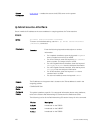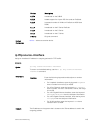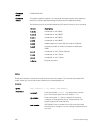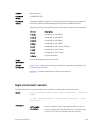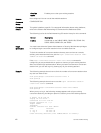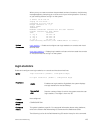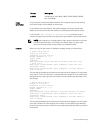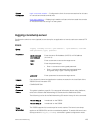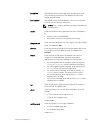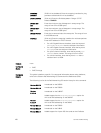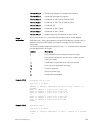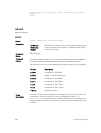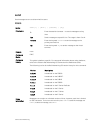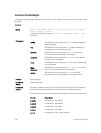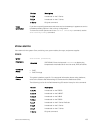
The kernel core dump is copied to the Control Processor (CP) core-dump
directory: flash://CORE_DUMP_DIR/f10_cpu_timestamp.kcore.gz
Where cpu specifies a Z9500 CPU and is one of the following values: cp (Control
Processor), cp (Route Processor), lp0 (line-card processor 0), lp1 (line-card
processor 1), or lp2 (line-card processor 2);
timestamp is a text string in the format: yyyyddmmhhmmss
(YearDayMonthHourMinuteSecond).
Because flash space may be limited, using the logging coredump server
command ensures your crash (application and kernel) files are uploaded
successfully and completely to a server. Only a single core-dump server can be
configured. Configuration of a new core dump server over-writes any previously
configured server.
NOTE: You must disable logging coredump (no logging coredump
command ) before you configure a new server destination for core dumps.
When you enter the logging coredump server command, you are required to
enter a password. Use the password of the FTP server where the core files are to be
copied. The password can be up to 15 characters; special characters are allowed.
After you enter the password, an FTP URL is created with the credentials in the
operating system. The CLI monitors core dumps in the unit.
On the Z9500, when you enable core dumps of application and kernel crashes to
be uploaded to an FTP server, only core dumps from the Control Processor are
uploaded to the server. Core-dump files from the Route Processor and line-card
CPUs are moved to flash memory on the Control Processor CPU and can be
accessed by performing an FTP to the Control Processor core-dump directory:
flash://CORE_DUMP_DIR/f10_cpu_timestamp.kcore.gz
ping
Test connectivity between the system and another device by sending echo requests and waiting for
replies.
Syntax
ping [host | ip-address | ipv6-address] [count {number |
continuous}] [datagram-size] [timeout] [source (ip src-ipv4-
address) | interface] [tos] [df-bit (y|n)] [validate-reply(y|
n)] [outgoing-interface] [pattern pattern] [sweep-min-size]
[sweep-max-size] [sweep-interval] [ointerface (ip src-ipv4-
address) | interface]
Parameters
host (OPTIONAL) Enter the host name of the devices to which
you are testing connectivity.
126
Control and Monitoring



